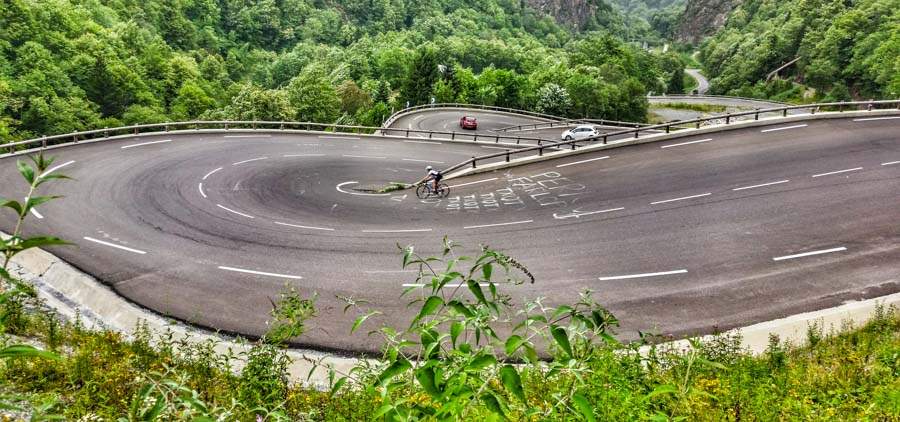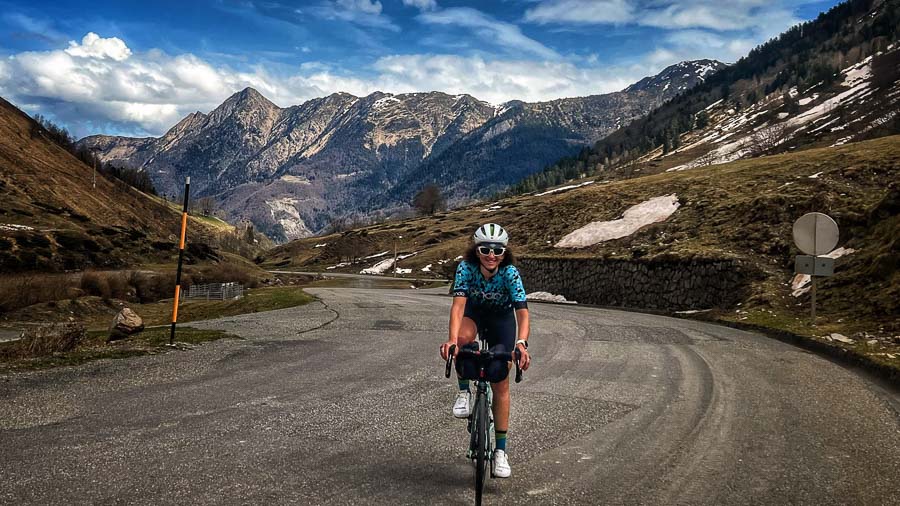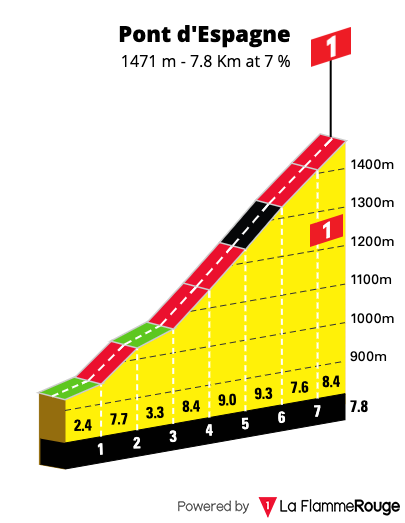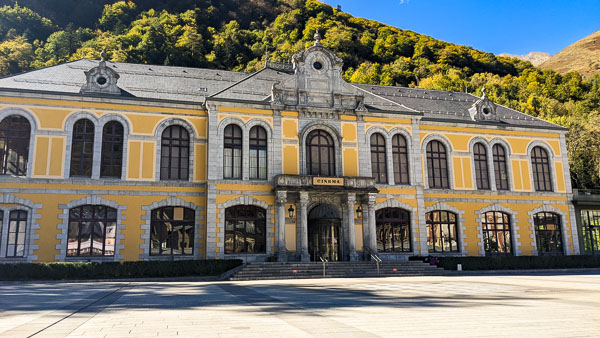A guide to cycling the climbs of Cauterets, Cambasque and Pont d’Espagne
Post last updated:
The ride to Cauterets is a favourite of mine and somewhere I cycle to regularly. It’s a great option when you want something that is not super tough but still offers a little challenging terrain. Once you arrive at Cauterets you can choose to head up to Pont d’Espagne or Cambasque, where the 2023 Tour de France will finish stage 6. Both these options add a degree of difficulty to the climb if you feel like an extra challenge.
I always love stopping in Cauterets and enjoying a coffee and croissant at one of the many cafés. This is a popular destination year-round and there is always a great atmosphere around the village making it a great place to stop. A feature of the road leading into Cauterets is the set of hairpins about 4 km from the village. These were only built in 2013 after large storms combined with snow melt wash the old road away. You can see the old road to the right of the hairpins as you climb up.
The Seek Travel Ride website has over 40 cycling routes in the Pyrenees if you are looking for more options while you visit this beautiful part of France. We have created these routes based on our own experiences of visiting and cycling in the Pyrenees. I am now based in the Hautes Pyrenees and love exploring new and different places to ride and will add them to the list of routes as I create them.

Cycling Route to Cauterets
This route starts from Argeles Gazost and you head out of town in the direction of Pierreffite-Nestalas. The first part of the ride is relatively flat and I always like the warm-up before I start the climb. Once you reach Pierreffite you cycle through the village and take a right turn at the top of the rise and start the climb up the valley road. The climb itself, whilst just over 10 km long, is a steady and gentle gradient of between 4 and 5%. The scenery along the valley is stunning as the road winds its way along the Gave de Cauterets.
The hairpin bends are the toughest part of this climb and the gradient hits double figures in places. The good thing is that they are not too long and before you know it you are on the last few gentle kilometres to the village itself. Now it’s time to decide whether to call it a day in Cauterets or head up one or both of the other climbs that start from the village.
The town of Cauterets dates back to the early middle ages and functions now both as a winter ski resort and spa town. The ornate buildings in the town centre are well worth a visit in their own right. In fact, during long trips in the Pyrenees, I have often chosen to use a short ride to Cauterets as a recovery ride.
The Pont d’Espagne climb
Once at Cauterets, take a left turn and you will begin the 8 km climb to Pont d’Espagne. Don’t be fooled by the short climbing distance as the steep gradients provide quite a challenge. Along the road, you will hear the loud roar of water cascading down large rock gorges. It makes for an impressive sight and I recommend you stop either on the way up or down to fully appreciate the natural beauty. I found the end of this climb a bit anti-climatic as you simply finish in a large car park, but I think it’s still worth doing.
If you plan to cycle this climb I recommend either going as early as possible to try and beat some of the traffic or leave a little later once the traffic has passed. The day I cycled this there was a constant stream of traffic and smell of exhaust fumes. Not my favourite way to enjoy the scenery of the Pyrenees. Pont d’Espagne is one of the most popular destinations in the Pyrenees and a base for hikes and general sightseeing.

Cycling the Cambasque climb
The climb to Cambasque has featured not only in the Tour de France but also the Vuelta a Espagne. This provides a good reminder of just how close this section of the Pyrenees is to Spain. From Cauterets take a right-hand turn and you will begin the short punchy 6 km climb to the summit. The first three kilometres are quite steep – double-digit gradient steep in fact so be ready for it to hurt a little.
Cauterets is a ski resort and the road you are riding on traverses under the ski lifts to take winter sports enthusiasts to the top. In summer downhill MTB riders also use these lifts for a much easier way to the top. The final two kilometres of the climb provide some respite from the gradient as the road opens up towards the summit. The end of the climb is also at the base of a small waterfall which is very scenic.
Suggested cycling route
Distance: 59.3km / 36.8mi
Start elevation: 470m / 1,542ft
Max elevation: 1,460m / 4,790ft
Metres climbed: 1,662m / 5,451ft
Metres descended: 1,662m / 5,451ft
Categorised climbs: 2


Food and water
The village of Cauterets has numerous places to replenish food and water supplies. Every budget is catered for and I highly recommend you take the opportunity to stop here and have lunch.
You will also be able to purchase food and water from Pierreffite-Nestalis which is at the very base of the climb.
Highlights
- The spa town of Cauterets is a destination in its own right. Marvel at the magnificent art deco buildings and the history of this unique spa town.
- The Pont d’Espagne climb will have you pedalling to the summit with the sound of waterfalls cascading along the roadside. Truly something to behold.
- Cambasque will take you high above the chair lifts at the ski station, to pristine mountain vistas, green meadows and streams.


Need more help or information?
If you need a hand planning some cycling routes in the Pyrenees feel free to send an email to me at info@seektravelride.com and I can help you with your query. The Seek Travel Website has lots of information about cycling in Pyrenees and a good place to start for more information is the Best Base for Cycling in the Pyrenees article.
